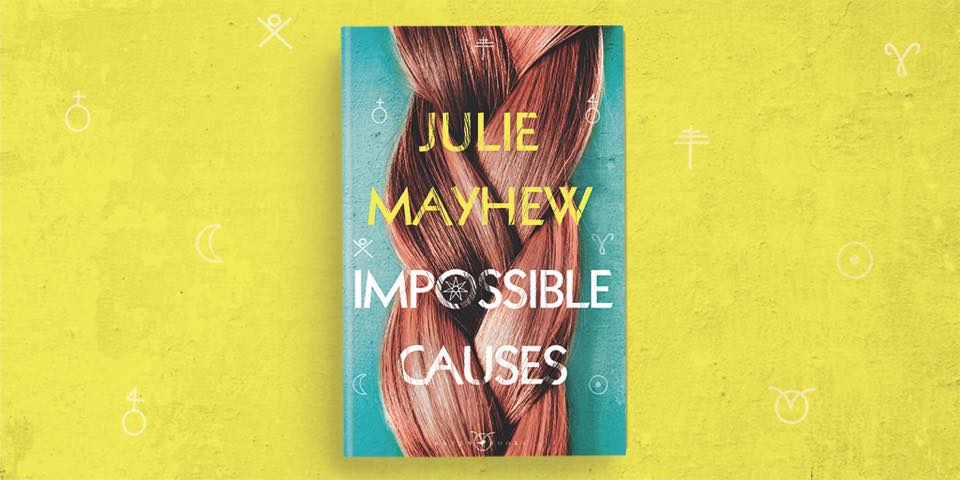The marketing tagline for Julie Mayhew‘s new literary crime novel entices, suggesting it is The Crucible meets The Craft. The influence of both is clear. Arriving on the fictional island of Lark in the North Atlantic, new residents, teenager Viola and her mother, never quite shake off their outsider label, and struggle to settle in amongst their new pious, conservative community. Viola’s best attempt is to befriend the Eldest Girls – three adolescents in their final year of school, who have been spotted gathering at night by the island’s standing stones dressed in nightdresses and chanting.
The premise is immediately intriguing. Viola presents as a relatable protagonist, showing readers the islanders and their culture as she sees them, as a newcomer. The opening chapter is centred on the discovery of a body, hooking the reader into a mystery that isn’t resolved until the novel’s final pages. Leah Cedars – a lifelong resident of Lark and teacher at the school – serves as a twin protagonist to Viola narrating in first person and giving an alternative viewpoint to the remote island community and its behaviours. The characters are established effectively and the novel draws the reader in with its quiet, off-kilter atmosphere and the sense that lies are being sown. However, this loses potency as the novel progresses.
The shifting of narrative stance – third to first person, various timelines – becomes tricky to navigate and the reader begins to wonder what the benefit of structuring the novel this way is. The idea of connecting each section of the book to a tarot card does add to the eerie aura of the island and helps develop the theme of the supernatural. Eventually, though, this too loses impact and feels a little superficial. Moreover, by the novel’s third act, the pace dies down and apparent plot reveals become confusing and drawn out. Towards the final climax, suspense is rebuilt and some final twists are effective once again, but there is still a feeling that much of the latter plot points could have been condensed to retain tension and engagement.
Themes of mass hysteria and patriarchy are clear and well-developed, and many elements of Impossible Causes do entertain and intrigue. The prose itself is carefully crafted, deliberately simple at points, and evocative in terms of setting and atmosphere. However, the novel very much becomes one of two halves – the first half much stronger than the second.
